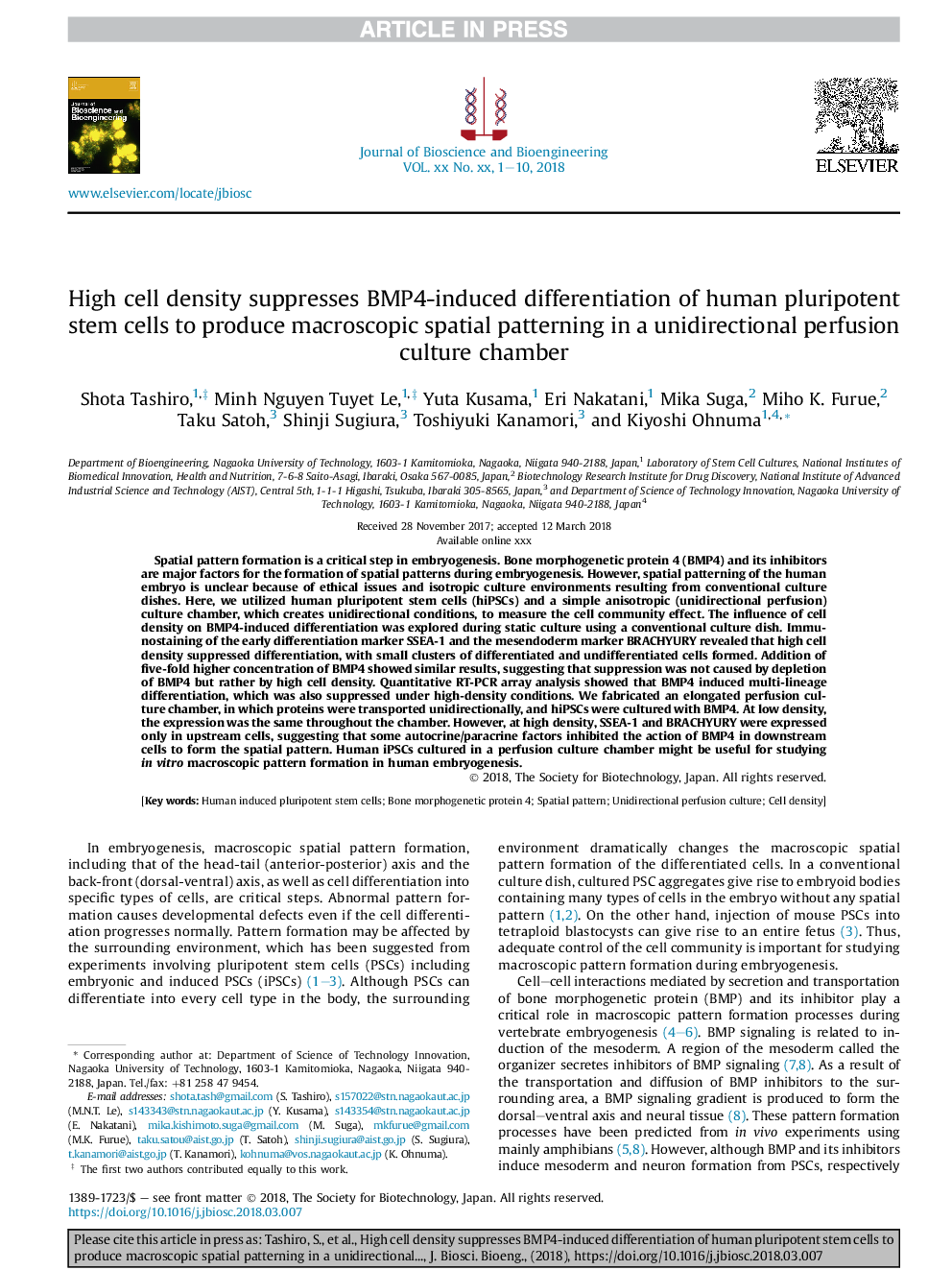| کد مقاله | کد نشریه | سال انتشار | مقاله انگلیسی | نسخه تمام متن |
|---|---|---|---|---|
| 6489591 | 1416538 | 2018 | 10 صفحه PDF | دانلود رایگان |
عنوان انگلیسی مقاله ISI
High cell density suppresses BMP4-induced differentiation of human pluripotent stem cells to produce macroscopic spatial patterning in a unidirectional perfusion culture chamber
دانلود مقاله + سفارش ترجمه
دانلود مقاله ISI انگلیسی
رایگان برای ایرانیان
کلمات کلیدی
موضوعات مرتبط
مهندسی و علوم پایه
مهندسی شیمی
بیو مهندسی (مهندسی زیستی)
پیش نمایش صفحه اول مقاله

چکیده انگلیسی
Spatial pattern formation is a critical step in embryogenesis. Bone morphogenetic protein 4 (BMP4) and its inhibitors are major factors for the formation of spatial patterns during embryogenesis. However, spatial patterning of the human embryo is unclear because of ethical issues and isotropic culture environments resulting from conventional culture dishes. Here, we utilized human pluripotent stem cells (hiPSCs) and a simple anisotropic (unidirectional perfusion) culture chamber, which creates unidirectional conditions, to measure the cell community effect. The influence of cell density on BMP4-induced differentiation was explored during static culture using a conventional culture dish. Immunostaining of the early differentiation marker SSEA-1 and the mesendoderm marker BRACHYURY revealed that high cell density suppressed differentiation, with small clusters of differentiated and undifferentiated cells formed. Addition of five-fold higher concentration of BMP4 showed similar results, suggesting that suppression was not caused by depletion of BMP4 but rather by high cell density. Quantitative RT-PCR array analysis showed that BMP4 induced multi-lineage differentiation, which was also suppressed under high-density conditions. We fabricated an elongated perfusion culture chamber, in which proteins were transported unidirectionally, and hiPSCs were cultured with BMP4. At low density, the expression was the same throughout the chamber. However, at high density, SSEA-1 and BRACHYURY were expressed only in upstream cells, suggesting that some autocrine/paracrine factors inhibited the action of BMP4 in downstream cells to form the spatial pattern. Human iPSCs cultured in a perfusion culture chamber might be useful for studying in vitro macroscopic pattern formation in human embryogenesis.
ناشر
Database: Elsevier - ScienceDirect (ساینس دایرکت)
Journal: Journal of Bioscience and Bioengineering - Volume 126, Issue 3, September 2018, Pages 379-388
Journal: Journal of Bioscience and Bioengineering - Volume 126, Issue 3, September 2018, Pages 379-388
نویسندگان
Shota Tashiro, Minh Nguyen Tuyet Le, Yuta Kusama, Eri Nakatani, Mika Suga, Miho K. Furue, Taku Satoh, Shinji Sugiura, Toshiyuki Kanamori, Kiyoshi Ohnuma,